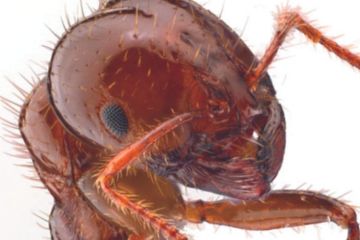
Red fire ants, electric ants, browsing ants, yellow crazy ants, tropical fire ants, Argentine ants, African big-headed ants – Australia has some major ant challenges and would be a very different land if we were to let these invaders have their way.
Right now Australia is attempting to totally eradicate the first three ant species on that list and eradicate the fourth from some areas.
The federal government has just released a draft National Invasive Ant Biosecurity Plan that sets out strategies for the next decade to manage the highest-risk ant species and prevent new ant invaders establishing in Australia. Feedback is invited until 30 November 2018.
Given the potential of invasive ants to dominate and transform ecosystems and cause species extinctions and declines, this is a vitally important plan. It proposes actions across the biosecurity spectrum, encompassing prevention, detection, response, containment, asset-based protection/ongoing management and cross-cutting actions.
Ant species identified in the plan as potential high-risk environmental invaders include the Asian needle ant, European fire ant, tawny crazy ant and Japanese pavement ant – names that highlight the wide variety of potential pathways to Australia.
The plan summarises the shared characteristics of the world’s most invasive ant species as follows:
- They are omnivorous.
- They have adopted an opportunistic nesting behaviour.
- They are found living in human-disturbed environments but may disperse into the natural environment from these areas.
- Their nests may have a large number of reproductive queens (polygyny) and extend over large areas.
- They show exacerbated aggressiveness towards other ant species but a reduced intra-specific aggressiveness at the population level.
- Their aggressive dominance affects other native species directly and indirectly, potentially causing ecosystem disruption.
There are many very sound proposals in the ant plan. As always, the major challenge will be to ensure the plan is funded and implemented. Please make a submission to support the plan or suggest improvements and advocate full implementation.









